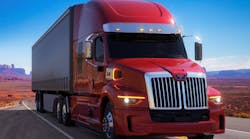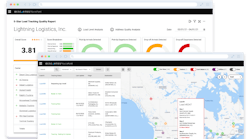Listening to truck drivers’ responses and concerns since the U.S. Dept. of Transportation proposed mandatory speed limiters on all new heavy trucks, something pretty obvious occurred to me: None of us is driving the speed limit.
Even the cool-minded, sensible ones know you can do a good 5 to 7, maybe 10 mph over and not worry about getting a ticket. And that’s pretty tame. When someone jokes that they’ve “got a bit of a lead foot,” we smirk. We brag about this and openly flout speed limits, which you can argue are often set very conservatively.
That’s because even the people setting the limits understand that many drivers see them as a “suggestion.” We’re a nation of people who hate being told what to do and love that roar of the engine on the open road, and that applies here—and you’d better damned well believe it.
On Interstate 95 the other day, I was tooling along in the middle lane at a tepid 62 mph in a 55 zone—just as an experiment. Multiple drivers instantly came blasting by, swarming right up on me before they darted to another lane. One gave me the “punishment” horn and laid it on as he drove past, with the woman in the passenger seat staring me down and calling me some nasty stuff (those big, open-mouthed cusses are an easy lip-read).
So it does make sense that some truck drivers are concerned that DOT’s suggested truck speed limits of 60, 65 or 68 mph could effectively make their trucks speed bumps. Even before any mandate, Fleet Owner has tracked instances of road rage directed at truckers because passenger car drivers felt they got stuck behind them or that big, logy trucks had cut in their way.
In Ohio, where lower speed limits for heavy trucks on Interstates were in place before being removed in 2009, I brought the topic up with a truck driver. “They changed it so that trucks and cars can go the same speed. Prior to that, trucks could go 55, and cars were doing 65,” he told me. “That was terrible, because, of course, the cars were weaving in and out of traffic and the trucks were moving slower.
“When everybody’s moving at the same speed, the traffic movement is much more fluid, more together,” he noted. His words echoed back to mind in late October when I was heading south on Interstate 81 and picked up Interstate 83, which splits off from the far left lane. I had to gun it to get in with the left-lane berserkers speeding through Harrisburg, PA. Trucks have to navigate similar highway splits and junctures across the country.
Crash causality is hard to pinpoint, but analysis from DOT, AAA and others shows that when heavy trucks and passenger cars collide, it’s the fault of the passenger car driver about 70% of the time. It’s those people speeding around recklessly like it’s their right—I watch drivers do this every day with impunity. Alarmingly, I sometimes see those drivers noodling around with a smartphone’s touchscreen or with the phone pressed up to their ear.
I don’t think you could flood the roads with enough police officers to catch them all, but it’s painful watching these truly reckless drivers zoom by like that and rarely, rarely have I seen one pulled over. There’s where your accidents and related fatalities are coming from.
I was traveling a few months ago on Scotland’s A9 highway, where they have average speed cameras—controversial to some—in place that recognize vehicles’ license plates continually and chart how long it takes them to cover sections of the highway. If you’re speeding, you’ll get your ticket in the mail. I admit, I’d hate to see it come to that, but let’s be real: If speeding is the real killer, go after speeders fairly as our friends across the pond have done before you target only big trucks here.


